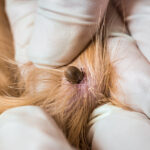Do you ever get the vibe that your cat is only tolerating your affection? You may think you’ve got it all figured out when it comes to petting your cat, but some things may surprise you. Today we’ll uncover the key signs of when your cat is enjoying the attention, when they are not, and how to avoid the backlash.
Seemingly, cats crave attention. They are always walking across a computer keyboard, sitting directly on a project, or serenading humans with a never-ending meowing chorus.
After giving into these demands with some cuddles and petting, they suddenly tense up, lash out, and even bite! Have they had enough of your love and affection, or are you simply doing it all wrong?
Believe it or not, there is a right way and a wrong way to show your cat love and affection. Unlike dogs, cats are rather particular about where and in what manner they receive attention.
The Wrong Way to Pet A Cat
It’s no mystery that most cats dislike their stomachs being scratched. Other “no-go zones” include the base of the tail and the top of their backs. So, what’s the “right” way to pet a cat?
Every cat is different, so keep an eye out for your own cat’s behaviors. Obviously, you should always be aware of signs the cat is not enjoying the attention, and never force your pet to cuddle. Behaviors like moving away from you, hissing, tensing up, biting, and swiping are clear indicators that your cat isn’t having a great time.
If your cat “suddenly” bites you or retaliates to your well-intentioned affection, you likely missed key indicators that your cat is no longer enjoying the attention.
When these behaviors are present, stop the petting and leave your cat alone. Allow them to cool off and make the next move. Just like humans, sometimes cats just aren’t into being touched.
The Right Way
The best way to avoid being swatted or hissed at is to let the cat determine how, when, and where the petting takes place. Allow them to decide if they are interested in affection, be aware of the “no-go zones” of petting a cat, and pay attention to their body language and behavior.
Most cats prefer to be scratched behind their ears, under their chins, and around their cheeks. Especially if you do not know the cat well, these are good places to start.
Pay close attention to their responses and behaviors. It won’t be a mystery of whether your cat is enjoying themselves.
Look for these signs to know when your cat is enjoying being pet:
- Purring and kneading
- A relaxed posture without tension
- A gently waving tail
- Rubbing against you
- Reinitiating petting after stopping
Remember, never force a cat or dog to receive attention. Understanding a cat’s behavior can make giving and receiving attention a rewarding and comforting experience for both human and feline. When we are aware of these behaviors, we no longer have to rely on the cat to take matters into their paws or teeth!
If you have any questions about your pet’s behaviors, or how best to interact with them, feel free to contact our office!






